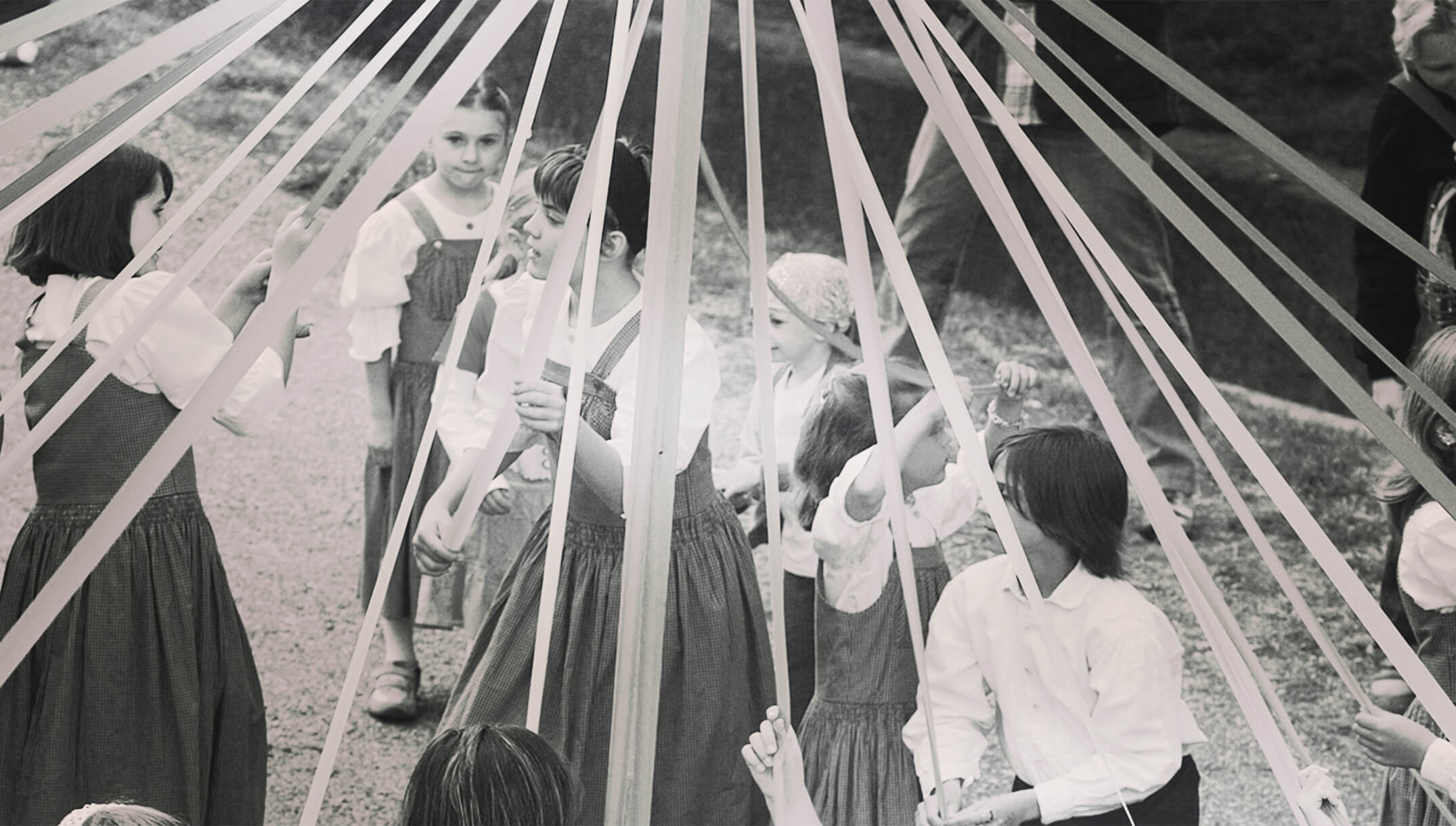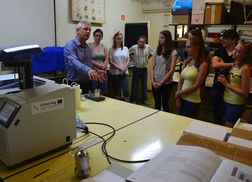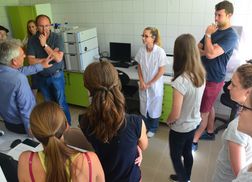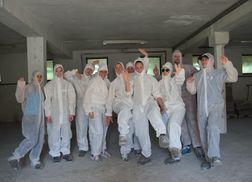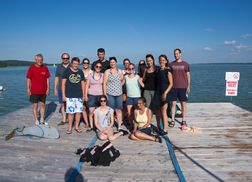2nd CEPI student exchange in Keszthely
The programme began with professional presentations held at the department of Animal Sciences of the Georgikon faculty of the University of Pannonia. CEPI colleague and veterinarian Dr. Andor Molnár spoke about the gut microflora balance and the influencing factors in poultry species. Dr. Molnár summarized the results of the cross-border research activities of CEPO, the former phase of cooperation between the two universities, and outlined the research topics and methodological improvements planned in CEPI.
Dr. László Pál gave a lecture about the importance of the fibre content and fibre composition of feedstuffs in poultry nutrition. In his presentation he introduced the different methods of fibre evaluation, the fibre components, the advantageous and disadvantageous properties of fibre and the relevant results of research activities of his own.
After the scientific presentations the operation of the bomb calorimeter, an equipment purchased in the frames of CEPI was introduced to the group in practice. CEPI colleague Orsolya Hegyi demonstrated the definition of the gross energy content of feedstuffs. Besides, students were shown the animal house and the infrastructure of animal testing at the department. Tools and equipment of compound feedstuff production were introduced by Dr. Károly Dublecz, professor of the department and Hungarian CEPI project leader.
The guests were hosted by Dr. László Wágner in the feed analysis laboratory. Here, students could get acquainted with the large equipment used in laboratory work (gas chromatographer, atomic absorption spectrometer, amino acid analyser, HPLC, GC+MS tool), the infrastructure used for crude fibre, crude protein, crude fat and mycotoxin measurements.
On the second day of the exchange programme, the group was hosted by Varga Szárnyas Ltd in Becsehely, Zala. First, the participants could visit a hatchery, where phases of an ongoing hatching process were seen. About 5 million meat type chicken are hatched here yearly, but capacity extension is expected in the near future. Next station of the study trip was a parent stock farm in service period. The farm went through technological improvement and was completed 4 years ago.
The group went on to a broiler farm where about 25,000 chickens per house are reared in 3 houses. The stock was 4-week old at the time of the visit. In periods of summer heat stress, cooling panels ensure the ventilation of the houses, the operation of which could be observed by the participants.
As the last programme point of the visit Varga Szárnyas, the group was showed around the slaughterhouse of the company, where 40,000 chickens are slaughtered and cut daily.
Finally, the group was invited to wine tasting and lunch in the cellar of the mayor of Becsehely on the wine hill near the village.
After lunch, we continued our trip to Tornyiszentmiklós, where one of the chicken farm of Bio Food Kft. was introduced. Here dual type cocks are reared for 71 days in the frame of Lohmann Dual programme and the premium quality meat is sold on Western European markets.

